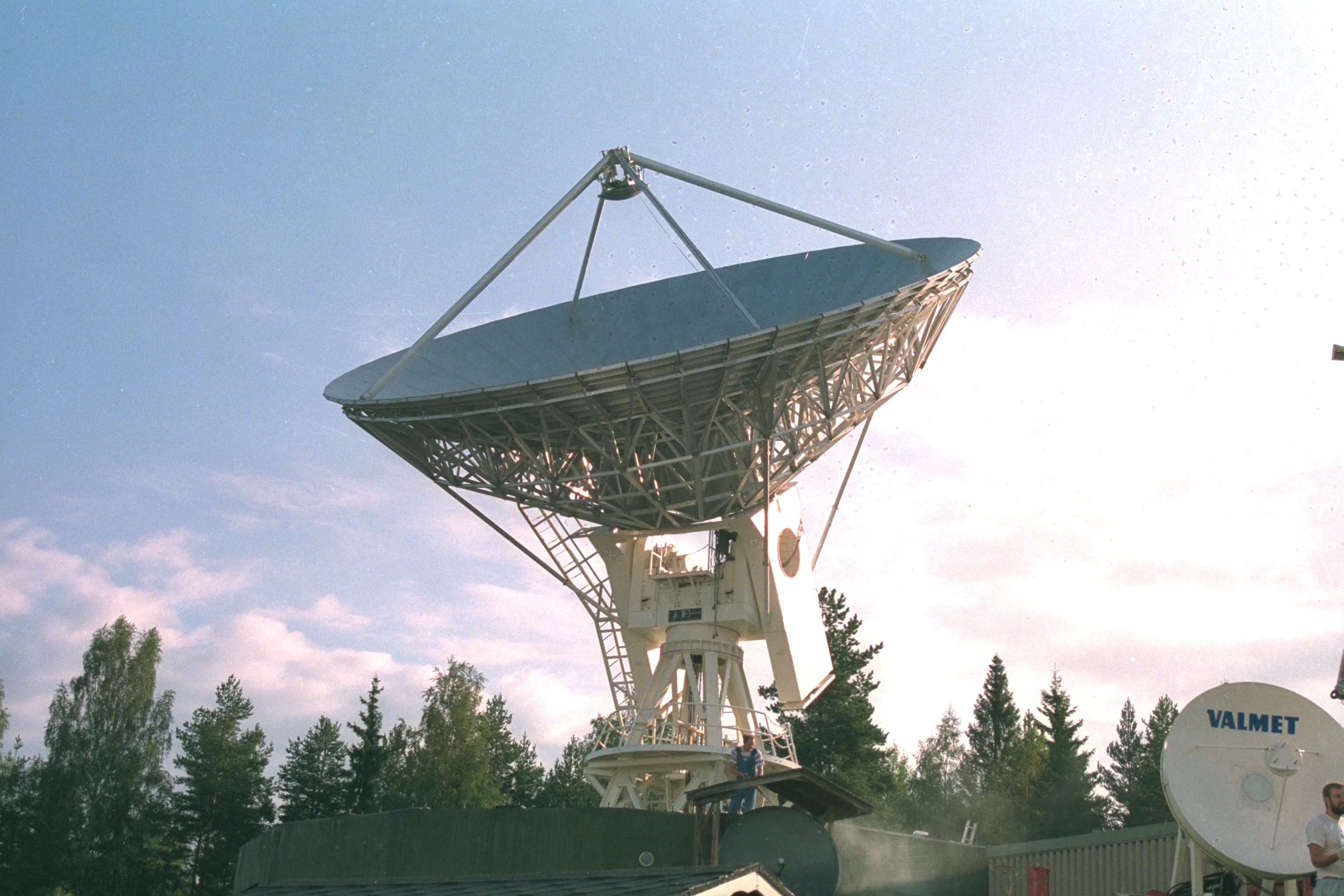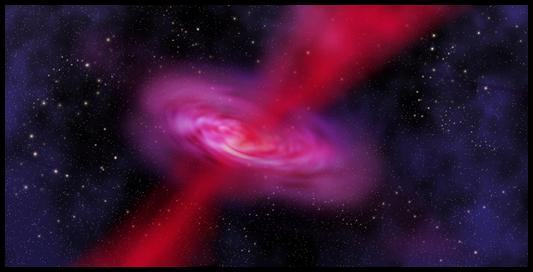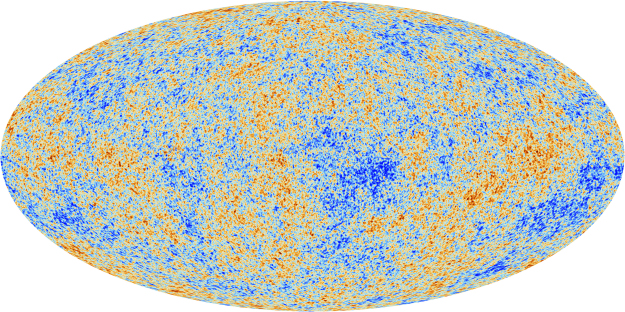Radio Astronomy
Anne Lähteenmäki
Radio telescopes are used to probe the sky at radio frequencies. The objects detected range from the Sun to the most distant of all radio sources in the universe, the cosmic microwave background (CMB). Radio frequencies penetrate even the thickest of dust clouds in the Galaxy, and allow us to see what is behind them. For example, the best way to map the structure of the Galaxy is to observe the abundant neutral hydrogen at 1.4 GHz (=21 cm). For more information on radio astronomical observations, see information on research projects at Metsähovi Radio Observatory.

Active galactic nuclei
Active galactic nuclei (AGNs) are the luminous central regions of distant galaxies. The emission detected from an AGN is so powerful that it outshines the rest of the galaxy, for example, the stars in it. The current understanding of the structure of an AGN is that there is a supermassive black hole in the centre of a galaxy with matter falling in from an accretion disk, and rotational and gravitational energy transformed into radiation. In addition, observations at radio frequencies have revealed the presence of jets in AGNs. These are streams of plasma, emanating at high relativistic speeds from the AGN cores. Shocks evolve in the fast moving plasma jets, and it is these shocks that we detect at radio frequencies, as synchrotron emission. Each radio outburst corresponds to a growing and then decaying shock in the AGN jet. At higher energies inverse Compton mechanism is at work. External photons or synchrotron photons from the jet itself are scattered to higher energies thus producing gamma-ray emission. Multifrequency data enables studies of the structure and physics of radio jets, and development and testing of shock models. For example, we are developing a numerical code for physical modelling of the radiation from the jet and the relativistic shock. The emphasis is on accurate modelling of the primary, synchrotron emission at radio-to-optical frequencies.

Metsähovi Radio Observatory
Metsähovi Radio Observatory, operating a 14-metre radio telescope at cm and mm wavelengths, is one of the pioneering radio monitoring observatories in the world. The Metsähovi database of total flux density measurements of active galactic nuclei at high radio frequencies consists of over 30 years of data, ranging from the well monitored core sample of approximately 100 sources to the new, extensive samples of, for example, gigahertz-peaked spectrum sources, BL Lac objects, and Narrow-line Seyfert 1 galaxies (several hundred sources).
Planck satellite
The Planck satellite, launched in May 2009, is a European Space Agency ESA’s mission designed to map the whole sky at nine high radio frequencies, from 30 to 857 GHz. The ultimate purpose of the satellite has been to measure, with a high resolution, the cosmic microwave background anisotropy pattern, and thus define the geometry and content of our Universe. At the same time all foreground radio sources in the sky, including extragalactic radio sources, have been measured, too. The by-products of the CMB map cleaning process, the foreground source maps, are a useful scientific result in themselves. Researchers at Metsähovi Radio Observatory have worked in the extragalactic point source project of the Planck satellite since 1997. One of the most important goals of this project has been the acquisition of complete sky surveys at the nine high radio frequencies These extragalactic foreground source catalogs will fill the huge gap in the high frequency radio domain. No other high radio frequency surveys, above 30 GHz, exist or are expected in the near future. Planck completed five full-sky surveys at all nine frequencies.
Related links:
For detailed information on the Planck mission, all Planck results and publications, and the Planck Legacy Archive visit the Planck Science Team site.
Planck early results. XV. The spectral energy distributions and radio continuum spectra of northern extragalactic radio sources.
(Image credit: ESA, Planck Collaboration)



